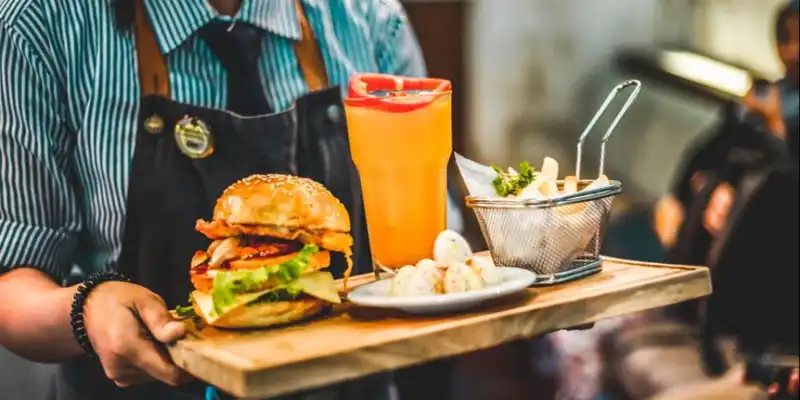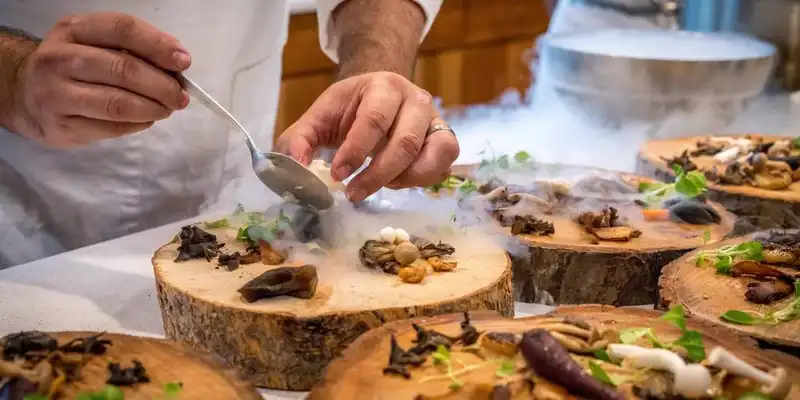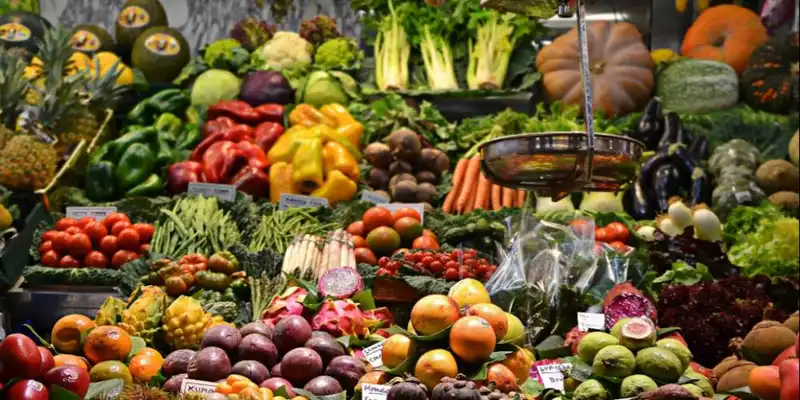All You Need to Know About Restaurant Food Costs
What is Food Cost?

A restaurant's food cost is how much it spends on ingredients to create the dishes it sells. Food cost is an essential calculation because restaurants that know how much they spend on food can effectively set menu prices in a way that ensures they stay profitable. Get it wrong, and your food costs will eat into what is already likely to be a small margin.
On the surface, food cost seems like a simple calculation; just discover how much each ingredient you use in a dish costs, add the items together, and the total number is how much the dish costs to make. However, the reality is that working out your food costs isn't that easy. The calculation will consider several extra factors including
- Waste - A restaurant will rarely end the day, week, or month without having to throw out food. Even the most efficient restaurant creates waste. Restaurant owners should consider this when calculating food costs as doing so will give a more accurate projection about how much it is spending on food.
- Changing food prices - Food costs can go up and down regularly. Restaurants that buy food straight from producers may find that prices vary depending on how much of each item they produce. Other ingredient costs will rise due to inflation. It is crucial restaurants calculate food costs regularly, so they aren't setting prices based on old data.
- Other expenses - Food isn't the only cost that goes into creating items on your menu. Restaurant owners should be wary of the cost of labor used to create the items they sell. While labor isn't part of your food cost calculations, you should nonetheless consider it when pricing your menu.
What is a Good Food Cost Percentage?
Once restaurants know their food costs they can work out how much they are spending on ingredients compared to how much the food brings in when sold. Restaurants should typically aim for overall food costs of between 28 and 35 percent of sales, according to Restaurant Report. Whether you are closer to the 28 or 35 percent end of the scale will depend on several factors.
For example, restaurants that sell items made from expensive ingredients may have higher food costs. These restaurants can handle this higher food cost percentage because they make more money on each item sold. On the other hand, restaurants that sell cheaper meals may need to have a lower food cost percentage to make selling them worthwhile.
For example, if a restaurant sells grilled lobster for $40 with food costs of 35 percent, it will earn more for that dish than when it sells $20 pasta with food costs of 28 percent, despite the former having a higher food cost percentage.
Food costs will likely vary across a menu depending on the dish. Also, restaurants may choose to sell certain dishes with a lower profit margin as a marketing strategy. For example, a restaurant that sells sharing platters at a lower profit margin in the hopes that this will attract groups who go on to spend on higher-margin items such as alcohol.
Ultimately, what matters most is the overall amount your restaurant spends on food in relation to its revenue, not the food cost of individual dishes.
Calculating Cost Per Dish vs. Cost of Goods Sold

There are two main ways restaurants can calculate food costs. The first is to work out the cost per dish, while the second is to calculate the cost of goods sold.
To calculate the cost per dish, you first need to work out how much of each ingredient goes into each meal you sell, how much this amount of the ingredient costs, and then add up all these numbers.
To work out the cost of making a pizza, a pizzeria owner would need to asses all the ingredients that go into making the dough, sauce, and toppings and calculate how much these ingredients cost.
The good thing about this method is that it gives the restaurant an idea about how much each dish costs to make. This can be used to guide restauranteurs as they price individual menu items.
The downside of this method is that adding up the cost of, for example, a pinch of salt or a tablespoon of olive oil is difficult. Additionally, this method doesn't consider the cost of waste or spillage.
Another way to calculate food costs is to calculate your restaurant's overall food costs over a period of time. This will provide an accurate way of assessing how much your restaurant spends on food in comparison to how much it brings in from sales.
The formula for calculating food costs in this way is to divide the cost of food sales by the actual food sales.
In this formula, calculating the cost of food sales is the most challenging part. First, you'll need to choose a time frame to measure. For example, two or four weeks.
You then need to take three values. These are
- The value of the inventory your restaurant has at the start of the period.
- The cost of your purchases during the time.
- The value of the inventory you are holding at the end of the time period.
(A + B) C = Cost of Goods
To calculate the cost of goods percentage, you can then divide the cost of goods by the value of goods sold (D).
Here is an example. Imagine a sandwich shop that wants to calculate its food cost percentage over 28 days. At the start of the period, it is holding inventory worth $400 (A). It spends $1,000 (B) on ingredients throughout the month, and then on the last day has inventory worth $450 (C). In total, the restaurant made $2,800 in sales (D).
($400 + $1,000) - $450 = $950
$950 / $2,800 = 0.34
This would mean the restaurant has a food cost of 34 percent of total revenue. An acceptable figure based on the recommendations above.
This way of working out food costs is more all-encompassing than doing so on a per-item basis. It also means restaurants don't have to worry about working out the exact value of every ingredient they put in each dish they serve.
Restaurants should take food costs consistently. This allows you to consider fluctuations in the cost of food or one-off situations that may have an impact on the calculation. For example, if you fail to store food properly and have to throw out a larger than average amount of fresh ingredients.
How to Price Your Menu Effectively
To price a menu effectively, a restaurant needs to know how much money it needs to make to be successful. This calculation takes into account the cost of food, as well as the cost of rent, labor, and other expenses. The restaurant will also need a good idea about how much food it expects to sell.
In the above section, we mentioned that food costs are usually between 28 and 35 percent. Additionally, according to Chron, a restaurant's labor costs should be between 25 and 40 percent of total sales; with fast-food restaurants being at the lower end of the scale and fine-dining restaurants being at the upper end of the scale.
Chron recommends total food and labor costs of between 60 and 65 percent. Ultimately, the exact breakdown of food to labor doesn't matter as much as the total prime costs.
Restaurants also need to compare their actual food costs vs their ideal costswhich is how much your food costs need to be for your restaurant to be successful.
Imagine a restaurant with labor costs of 35 percent. To fit in with the above recommendation, it would need food costs of 30 percent or under. However, if its actual food costs are 40 percent, it will need to take steps to get this number in-line with its ideal food cost percentage.
How to Manage Restaurant Food Costs

There are several steps you can take to get your actual food costs to match your ideal food cost percentage.
The easiest thing to do is simply raise the price of items on your menu. However, this risks making your restaurant less competitive or alienating regular customers. As such, you may be better off finding other ways to reduce food costs. Even if you do raise prices you'll still benefit from reducing the amount you spend on each menu item.
The second easiest way to reduce food costs is to spend less on ingredients. You'll want to do this without the ingredient changes affecting the taste of items on your menu. Instead of buying lower-quality ingredients, seek out different suppliers or negotiate better rates where possible.
Beyond the above changes, there are plenty of things you can do to decrease food costs.
Adjusting your menu can help. Think about promoting items with lower food costs or removing ones where the food costs are too high. Doing this could bring your restaurant's overall food costs down. Although, be sure to consider the profit each item brings in.
Restaurants that are wasting too much can drive cost efficiencies by reducing the amount of food that gets thrown out. Buying fresh ingredients in smaller batches could help if you can do so while keeping the risk of running out of an ingredient low.
Creating a menu that uses ingredients efficiently can also help. For example, ensuring ingredients are used in multiple dishes were possible reduces the chance of them being left over if the menu item they are used in isn't popular. Additionally, having a specials board can be an excellent way to use up excess ingredients at risk of going to waste.
Introducing better inventory management practices is also a good idea. A first-in-first-out system whereby ingredients are used in the order they come into stock could help reduce waste and, ultimately, food costs.
While each tip of these tips is unlikely to make a massive difference on its own (unless you have big problems in a particular area), in combination they could be enough to shave a few points off your expenses, making a significant difference to your bottom line.
Ultimately, having an accurate view of your restaurant's food costs is a crucial step to running a successful restaurant. It helps with menu pricing and it can show you where to drive cost efficiencies in your business.










